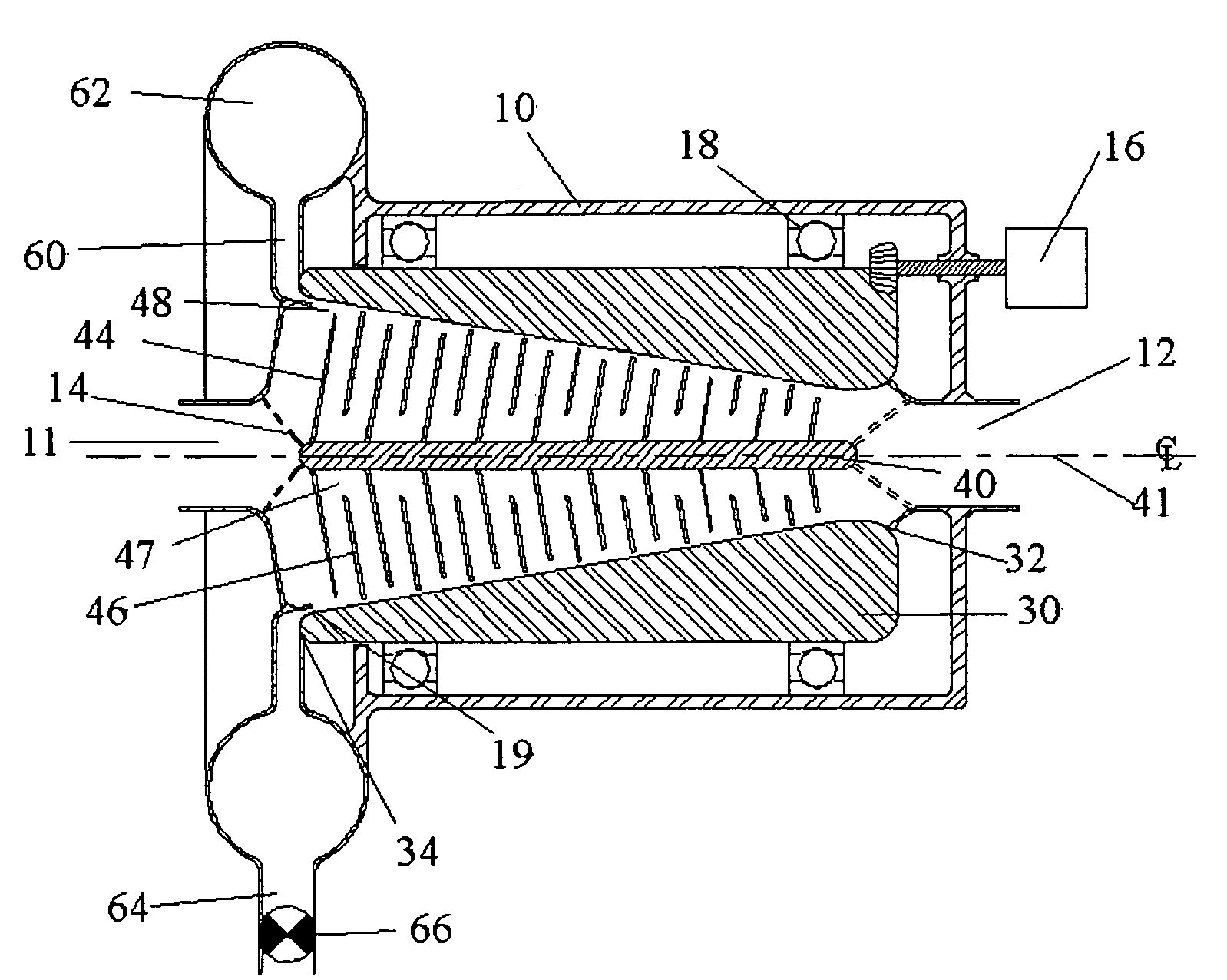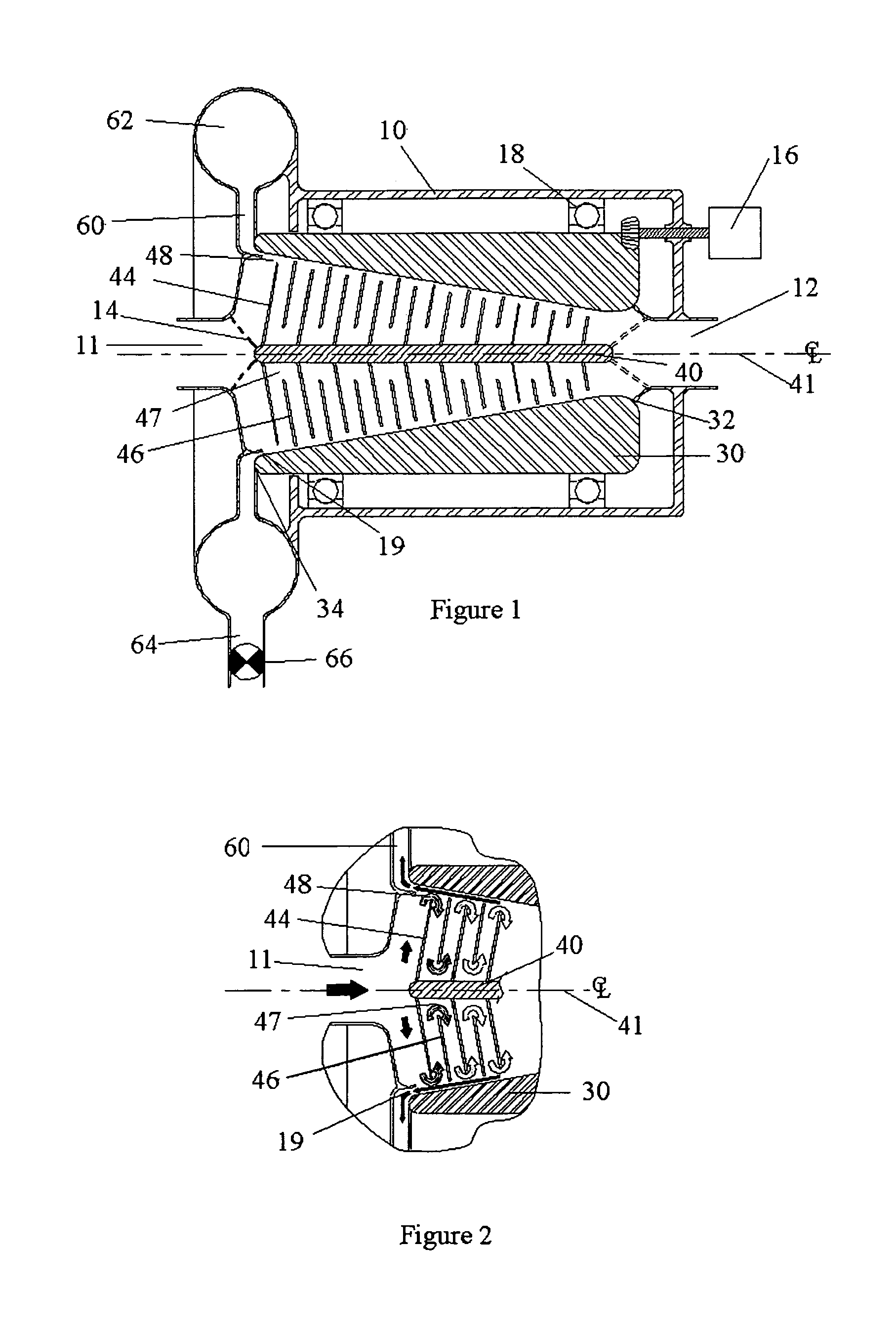Method and apparatus for separating particles
a technology of mechanical separator and separator, which is applied in the direction of magnetic separation, centrifuges, separation processes, etc., can solve the problems of re-entrainment of separated particles, structural filters have a capacity limit in terms of total allowable mass of captured particles, and inherent restrictions on the maximum concentration of particles, so as to reduce the size and energy requirements of mechanical separators. , the effect of reducing the energy inpu
- Summary
- Abstract
- Description
- Claims
- Application Information
AI Technical Summary
Benefits of technology
Problems solved by technology
Method used
Image
Examples
Embodiment Construction
[0027]The new mechanical filtration separator is capable of collecting both fine, sub-micron particles and very high volumes of entrained solids. Further, it accomplishes these objectives with a relatively low energy input, less turbulent flow and using a more compact construction as compared to conventional mechanical separators.
[0028]In a preferred embodiment, the separator is a reversing flow, rotating collector that uses a static interior vane assembly that reversibly directs fluid-solids flow in radial directions, first toward and then away from the inside wall of a rotating hollow collector. The non-rotating, axially coincident vane assembly may include a plurality of vanes. The vanes may be disk, conical, spherical or parabolic shaped, with each vane having a substantially outer edge. The vane assembly may be nested inside the rotating cone, such that gas-solids mixtures are repeatedly directed to reverse flow (from radially outward to radially inward) in the vicinity of the ...
PUM
| Property | Measurement | Unit |
|---|---|---|
| speed | aaaaa | aaaaa |
| velocity | aaaaa | aaaaa |
| diameter | aaaaa | aaaaa |
Abstract
Description
Claims
Application Information
 Login to View More
Login to View More - R&D
- Intellectual Property
- Life Sciences
- Materials
- Tech Scout
- Unparalleled Data Quality
- Higher Quality Content
- 60% Fewer Hallucinations
Browse by: Latest US Patents, China's latest patents, Technical Efficacy Thesaurus, Application Domain, Technology Topic, Popular Technical Reports.
© 2025 PatSnap. All rights reserved.Legal|Privacy policy|Modern Slavery Act Transparency Statement|Sitemap|About US| Contact US: help@patsnap.com



